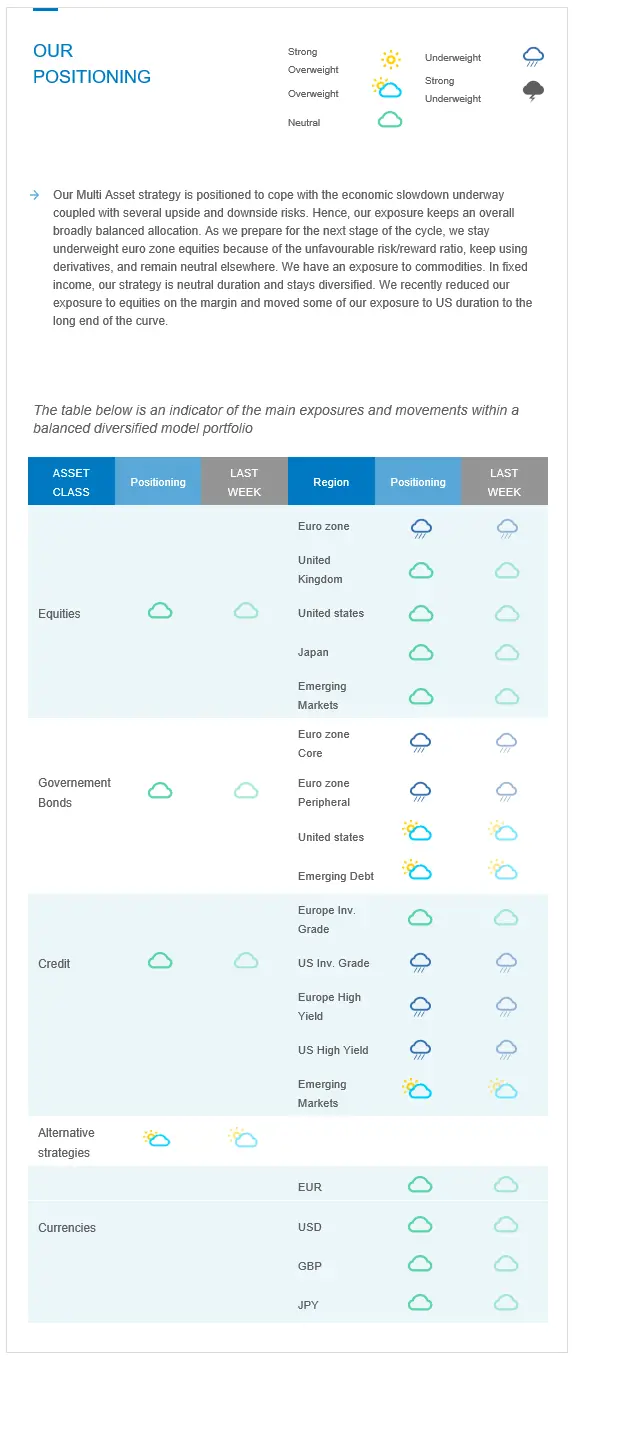Last week in a nutshell
- The US CPI rose by 0.1% in August amid rising costs for rents and healthcare and despite easing global supply chains, which had contributed to a surge in prices earlier this year. Inflation remains uncomfortably high for households, central banks, and investors.
- In the US, the Philadelphia Fed’s business outlook for September fell to -9.9 (vs. 2.3 expected). However, the New York Empire State manufacturing survey for September rose to -1.5 (vs. -12.9 expected), rebounding from its worst month since the COVID-19 pandemic.
- In China, data came in above expectations across the board, including retail sales and industrial production and showed a pickup in growth in August from the prior month. However, the real estate market continued to suffer.
- At a summit for the Shanghai Cooperation Organization in the Uzbek city of Samarkand, Russian President Putin told Chinese President Xi Jinping that Russia “understands your questions and concerns” about Ukraine.
What’s next?
- Central banks will be in the focus. In the US, the FOMC will decide on an additional policy tightening. Another 75bp rate hike in its funds rate is expected. Also, the publication of its quarterly Summary of Economic Projections will shed light on the future path of its monetary policy.
- Both the Bank of England and the Bank of Japan will also make interest rate decision. The BoE and Britain’s new Chancellor of the Exchequer, Kwasi Kwarteng, will put their ability to work jointly to the test. The first aims for monetary tightening while the latter is aiming for tax cuts.
- Flash PMIs for the US, UK, Germany, and the euro zone, among others will shed some light on the strength of the momentum in the global economy as key central banks remain committed to further tighten monetary conditions while rampant energy costs in Europe will call for fiscal support.
- In Italy, the General Election will be a milestone for the political reshaping of the country. Giorgia Meloni, the far-right candidate, has odds in her favour to succeed Mario Draghi as Prime Minister.
Investment convictions
Core scenario
- Our exposure keeps an overall broadly balanced allocation before positioning for the next stage of the cycle, whether it be a soft or a hard landing. We have an underweight stance on EMU equities, as the region is especially vulnerable to the rise in energy prices, the high inflation, a hawkish ECB and a marked slowdown in economic activity.
- While the environment still appears constrained by deteriorating fundamentals, markets are looking to central bank announcements, which, in turn, are becoming increasingly data dependent.
- Facing multi-decade high inflation, the Fed continues its hiking cycle along with a quantitative tightening, i.e., a balance sheet reduction. In our best-case scenario, the Fed succeeds in landing the economy. As a result, we expect the rise in the US 10Y yields to fade.
- Inflation is also at highs in the euro zone, hitting businesses, consumers, and ECB policymakers alike. The ECB started its monetary policy tightening cycle in July with a 50bp hike, followed by an additional 75bp in September. It also unveiled a new (“unlimited”) tool, the “Transmission Protection Instrument” (TPI).
- The risks we previously outlined are starting to materialize and are now part of the scenario.
Risks
- Upside risks include the fact that central bank actions are nearly priced for peak hawkishness in the US and weak sentiment and positioning in Europe. The negative impact of the energy crisis could be mitigated as countries are stepping up fiscal aid.
- Downside risks would be a monetary policy error via over-tightening or a sharp recession risk via a deeper energy crisis in Europe. Meanwhile investor concerns are continuously shifting between inflation and growth.
- The war in Ukraine is pushing upwards gas prices. An emergency plan, “Save gas for a safe winter”, is in progress to curb consumption and find alternative sources of supply.
- The threat of COVID-19, and its variants, remain as the virus keeps evolving and spreading at various speed throughout the world.
Recent actions in the asset allocation strategy
Our Multi Asset strategy is positioned to cope with the economic slowdown underway coupled with several upside and downside risks. Hence, our exposure keeps an overall broadly balanced allocation. As we prepare for the next stage of the cycle, we stay underweight euro zone equities because of the unfavourable risk/reward ratio, keep using derivatives, and remain neutral elsewhere. We have an exposure to commodities. In fixed income, our strategy is neutral duration and stays diversified. We recently reduced our exposure to equities on the margin and moved some of our exposure to US duration to the long end of the curve.
Cross asset strategy
- Our multi-asset strategy stays more tactical than usual and can be adapted quickly:
- Underweight euro zone equities, with a derivative strategy in place. We prefer the Consumer Staples sector where we find pricing power.
- Neutral UK equities, resilient segments, and global exposure.
- Neutral US equities, with an actively managed derivative strategy.
- Neutral Emerging markets, but positive on Asian Emerging markets because our assessment indicates an improvement, especially in China, both on the COVID-19 / lockdown and stimulus fronts during H2.
- Neutral Japanese equities, as accommodative central bank, and cyclical sector exposure act as opposite forces for investor attractiveness.
- With some exposure to commodities, including gold.
- In the fixed income universe, we acknowledge downward revisions in growth, highs in inflation expectations and strong central bank rhetoric regarding the willingness to tighten and fight inflation. We are neutral duration, with a preference for long US duration.
- We continue to diversify and source the carry via emerging debt.
- In our long-term thematics and trends allocation: While keeping a wide spectrum of long-term convictions, we will favour Climate Action (linked to the energy shift) and keep Health Care, Tech and Innovation.
- In our currency strategy, we are positive on commodity currencies:
- We are long CAD and took partial profit on this trade.

